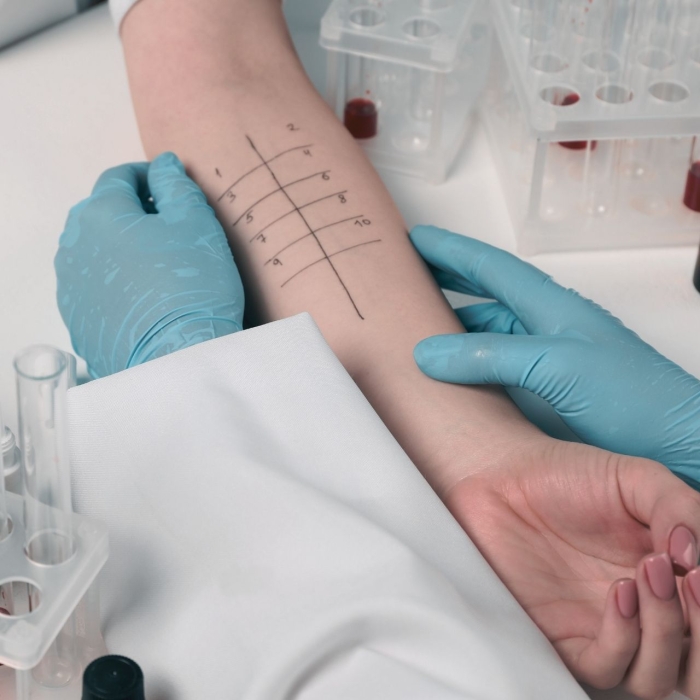
The prick test is a skin test in which a small amount of allergen is applied to the surface of the skin and then a tiny needle prick is used to help it penetrate the top layer of the skin. If the body is sensitive to the substance, a local allergic reaction (e.g. redness, swelling) develops.
Respiratory allergens: pollen (e.g. ragweed, birch, grasses), dust mites, animal hair, mould, etc.
Food allergens: milk, eggs, peanuts, soya, wheat, fish, other nuts, etc.
Other allergens: e.g. latex
It is not possible to book an appointment for the prick test either by phone or online, as a specialist allergist examination can be carried out as an additional examination on the basis of specialist justification, the fee for which is payable on the spot in addition to the specialist examination fee. If a patient so requests, an appointment must be made for a specialist allergology examination, during which a prick test will be carried out and evaluated.
Preparation: the test is usually done on the inside of the forearm or on the back in young children. The affected area of skin is disinfected.
Application of allergen solutions: different allergen extracts are applied drop by drop to the skin. Control samples are also applied to the skin (positive control: histamine, negative control: physiological saline).
Needle prick (prick): A tiny, almost painless needle prick (lance or sterile needle) helps to penetrate the top layer of the skin to remove the allergens. It does not cause bleeding.
Reaction monitoring (about 15-20 minutes): If the skin is sensitive to the allergen, an itchy, red swelling will appear at the puncture site.
Evaluation of the result: the doctor measures the diameter of the swelling and compares it with positive and negative controls. If the reaction reaches or exceeds 3 mm, this in itself indicates allergy in the case of a non-reactive negative control.